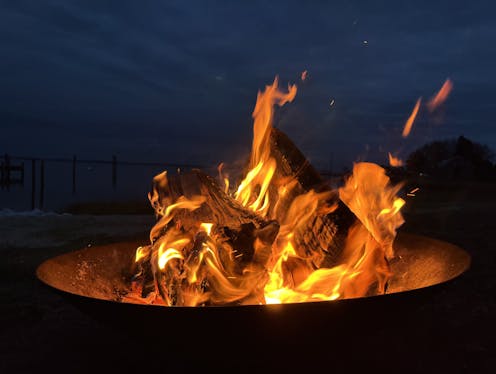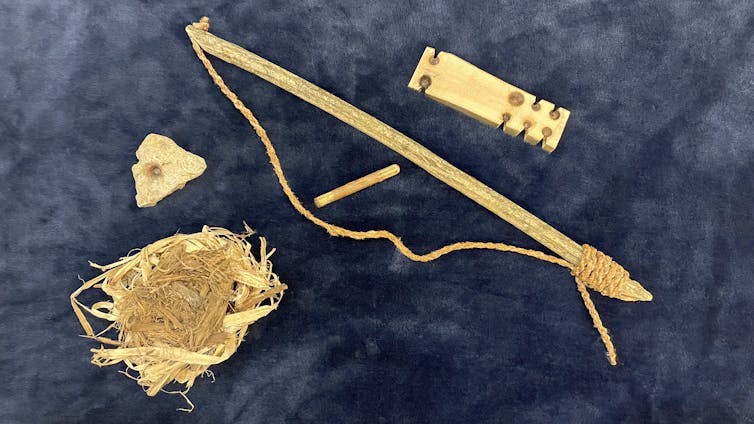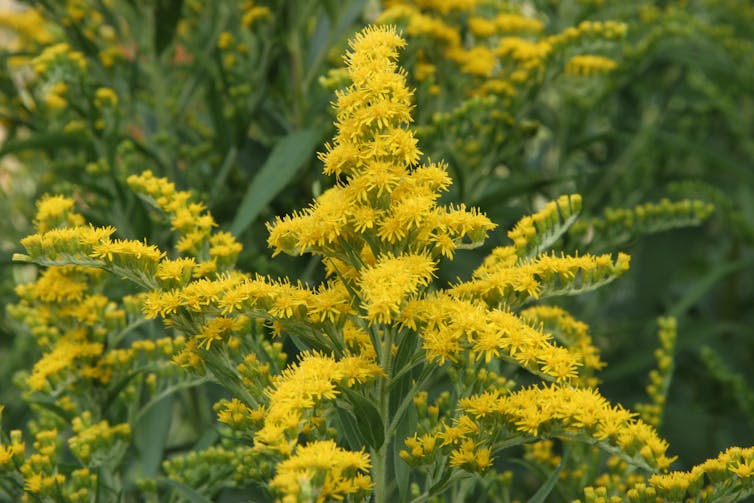Lighting a fire using friction requires an understanding of some physics principles − but there are
You may have seen contestants on reality shows like “Survivor” make fire using friction, but do you know the physics behind the process?

Humans have been making fire using friction for thousands of years, with evidence of its use found in archaeological records across different cultures worldwide.
Fire by friction is a testament to human ingenuity, contributing to the development of early technology and a later understanding of physics, chemistry and heat transfer.
Making fire, one of the key discoveries in human history, has played a pivotal role in human evolution, providing warmth, light, protection from predators, a means to cook and the ability to migrate into more hostile climates.
I’m an engineering professor, avid outdoorsman and Minisino Firecrafter who’s been studying and practicing fire by friction for many years. It’s a great way to explore key science concepts while engaging in a practice that humans have been performing for millennia.
Ember, flame, fire
Fire by friction relies on the conversion of mechanical energy into thermal energy through friction. Friction is the force of resistance between two surfaces when they slide, or attempt to slide, past one another.
There are many ways to create fire by friction, but the most common and easiest to learn uses a bow drill set.
A bow drill set consists of a thin spindle, a hearth board, a lightly curved bow, to which a bow cord is attached, and a “thunderhead” or bearing block, which is a stone or block of hard wood with a natural or carved divot used to press down on the top of the spindle.

First, the firemaker wraps the bow cord tightly around the spindle and uses it to rapidly spin the spindle against the hearth board, while simultaneously pressing down with the thunderhead.
Similar to how your hands become warmer when you vigorously rub them together, friction causes a rapid increase in temperature where the spindle meets the hearth board. This drives away any residual moisture. The wood also heats up mostly in the absence of oxygen, resulting in charring, a chemical process from incomplete combustion. What’s left over is mostly carbon.
As the spindle continues to spin, it grinds away the charred wood to form a small pile of charcoal dust. As the dust pile grows, it will eventually coalesce and ignite to form an ember.
The ember’s ignition point depends on a variety of factors, including the type of wood, the temperature and the humidity. Experiments often yield ignition temperatures in the range of 650-800 degrees Farenheit (340-430 degrees Celsius), with the most reliable estimates on the order of 700 degrees F (370 degrees C). Getting to this temperature is essential to create an ember and start the fire.
After an ember forms, the firemaker then transfers it to a tinder bundle made of dry leaves or grass, dead tree bark or other fibrous organic materials. The firemaker blows into the tinder bundle to further raise the temperature by increasing oxygen flow.
Eventually, the tinder bursts into flame, after which the firemaker can kindle it into a larger fire. Young fires are usually fragile – if the firemaker doesn’t provide them with enough fuel, air flow and protection from the wind and rain, they can go out.
Work smarter, not harder
Understanding the physics of fire by friction and the different variables involved can make a big difference and help the fire start more quickly with less effort.
First, keep it small. Firemakers should make bow drill sets carved from standing dead, dry tree limbs maybe an inch or so (2.5 centimeters) in diameter. Optimal spindles have diameters between three-eighths of an inch and a half-inch (1-1.25 cm).
How fast the friction force generates heat is directly proportional to how fast the firemaker bows, on average, and is independent of the diameter of the spindle. So, the faster you move the bow, the more heat you will create, regardless of the spindle’s size.
But because they have smaller cross-sectional areas, thin spindles increase the heat density at the spindle-hearth board interface, which is where the ember forms and ignites. By concentrating the heat in a smaller area at this interface, thin spindles reduce the time and effort required to form and ignite an ember.
Dry, unpigmented, medium-density woods – elm, poplar and cottonwood are some examples – will work well for the spindle and the hearth board. I’ve tested lots of wood types and found that, with a few exceptions, wood hardness mostly doesn’t matter.
I’ve also found that mature wildflower stalks – harvested fresh and allowed to dry out – work well as spindles. Tall, woody wildflowers like goldenrod, ironweed, teasel, mullein and the like can produce embers in seconds. If time permits, you can even make a bow cord with natural fibers extracted from flax, dogbane or nettle plants commonly found in the woods.

The fire-making process
The key variables the firemaker can control during the bowing process are the speed at which they’re moving the bow and how much pressure they’re applying to the spindle via the thunderhead. Start by seating the spindle tip into a notched divot carved into the hearth board. Then move the bow slowly until you get your balance.
Initially press down with the thunderhead just hard enough for pyrolysis to begin. Pyrolysis happens when heat causes organic material to decompose without oxygen. You’ll know when pyrolysis starts because you’ll see smoke rising from the spindle-hearth board interface.
Then, begin to increase you bow speed until you are bowing as rapidly as you can sustain for a minute or so. Don’t hold your breath, and use bow strokes as long as you can manage without compromising bow speed. The time it takes to form an ember decreases the faster you bow, though the length of your stroke doesn’t matter.
As speed increases, begin to increase the pressure you’re putting on the spindle, stopping when the increased friction begins to affect your ability to sustain a rapid bow speed. With good materials you’ll likely have a nice ember in well under a minute.
While modern technology has largely replaced primitive methods, fire by friction continues to be a source of fascination and a testament to human ingenuity. Understanding this process not only enriches humanity’s connection to the ancient past, but it also underscores how physics comes into play throughout daily life.
Bradley Duncan does not work for, consult, own shares in or receive funding from any company or organisation that would benefit from this article, and has disclosed no relevant affiliations beyond their academic appointment.
Read These Next
West Antarctica’s history of rapid melting foretells sudden shifts in continent’s ‘catastrophic’ geo
A picture of what West Antarctica looked like when its ice sheet melted in the past can offer insight…
As DOJ begins to release Epstein files, his many victims deserve more attention than the powerful me
Powerful men connected to Jeffrey Epstein are named, dissected and speculated about. The survivors,…
People are getting their news from AI – and it’s altering their views
Even when information is factually accurate, how it’s presented can introduce subtle biases. As large…






